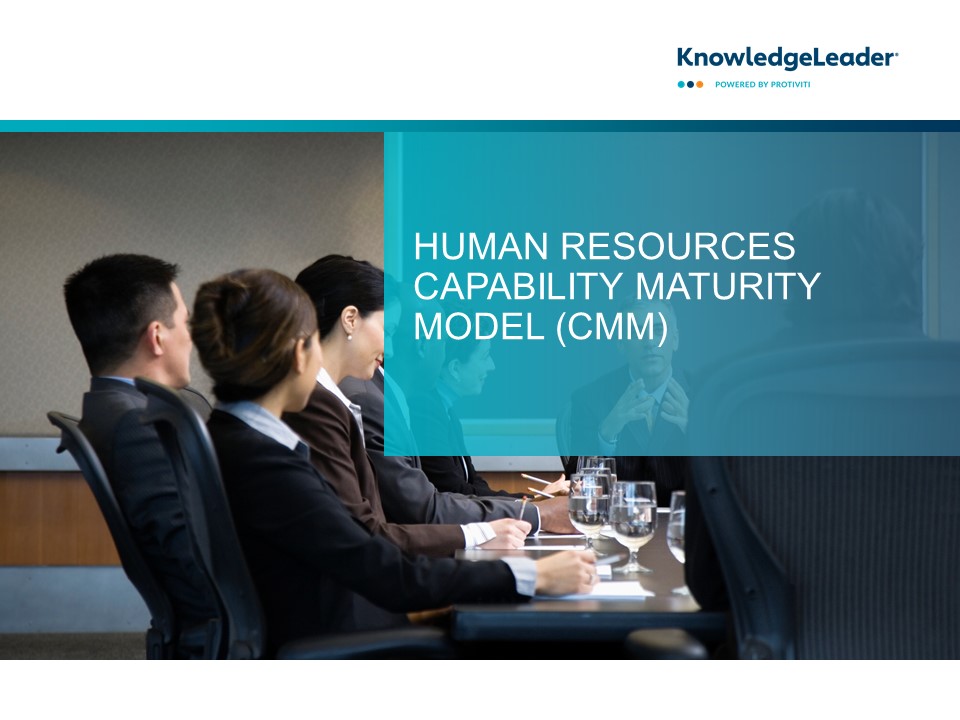Human Resources Capability Maturity Model (CMM)

This capability maturity model can be used to measure the maturity of an organization’s human resources management process and to assist its progress from the initial/ad-hoc state toward the optimized state.
The capability maturity model describes a maturity curve on these capability levels: INITIAL, which describes a poorly aligned function with non-documented strategies, manual management processes, lack of integrated systems and heavy reliance on spreadsheets/manual documents; REPEATABLE, which describes a loosely aligned function supported by informal policies applied to processes performed by personnel with mixed skill levels; DEFINED, which describes a strategic management structure in place with well-defined processes supported by an organized and highly trained team; MANAGED, which describes a function aligned with the organizational strategic plan and personnel; and OPTIMIZED, which describes a management process performed at an optimal level with best practices in full use. In this sample, an OPTIMIZED organization has integrated business process that are performed in less than three days and forward-looking internal reports that give insight on operating variances.
In this sample, an OPTIMIZED organization frequently updates recruiting strategies to ensure continual alignment.
The capability maturity model is a framework that describes an improvement path from an ad-hoc, immature process to a mature, disciplined process focused on continuous improvement. The CMM defines the state of a process using a common language that is based on the Carnegie Mellon Software Engineering Institute Capability Maturity Model.